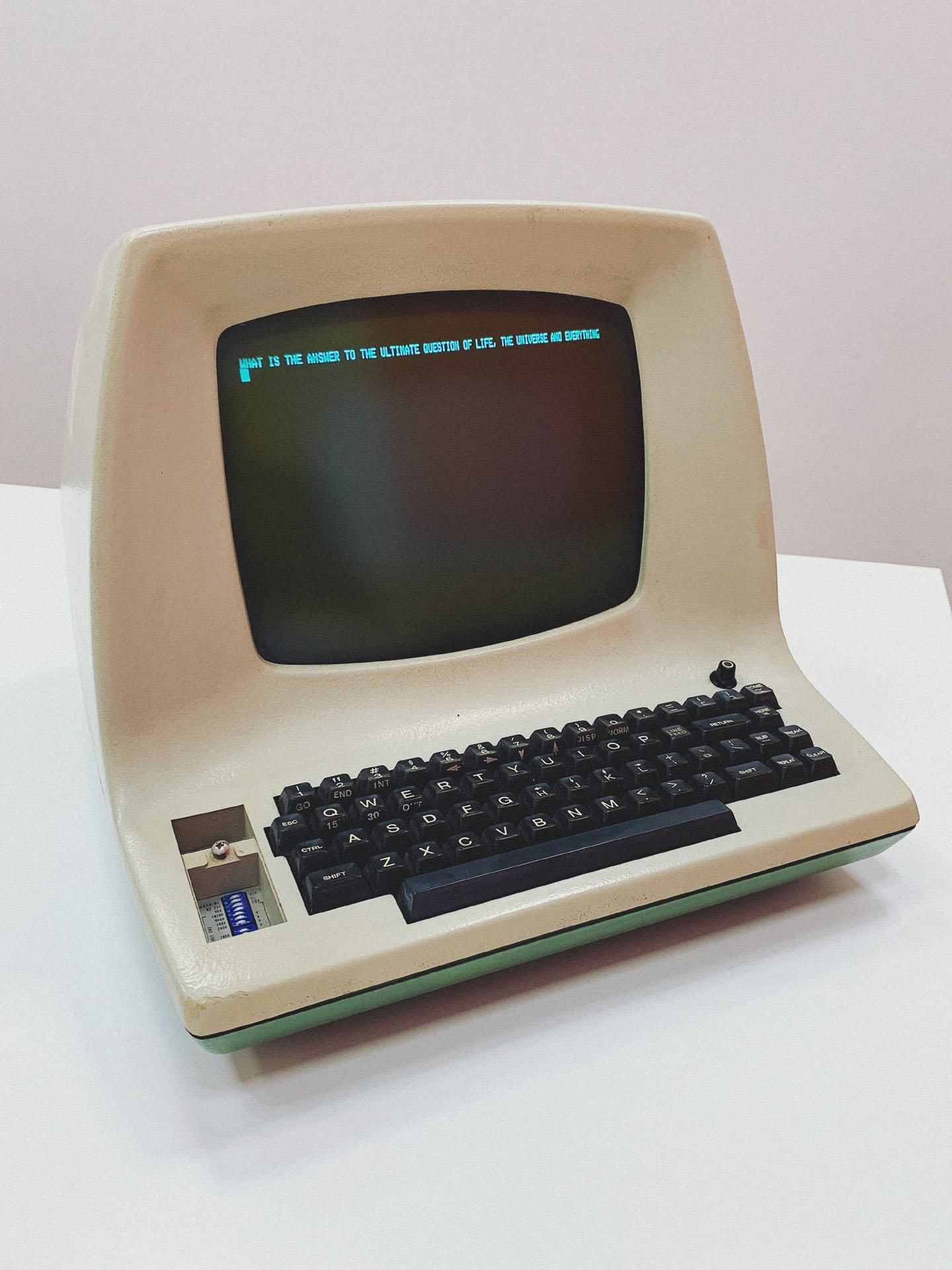Museum DataArt. Video terminal ADM-3A. The car is heavy, reliable, slaughter

One of our favorite exhibits is a classic example of the American school of design, a reliable and inexpensive device that instantly conquered America in the mid-1970s. Together with the mastermind of the DataArt museum, Gleb Nietzman, we remembered the evolution of input-output devices and carefully examined the ADM-3A terminal for interaction with a PDP-series computer.
The very first computers required direct contact and deep knowledge of the internal structure from a person. The one who wrote the program also had to switch the necessary toggle switches. The next stage in the evolution of interaction began with the appearance of punched cards and punched tapes for data input and alphanumeric printers for outputting results. Soon, electromechanical typewriters (say, in the 1970s in the USSR it was the Czech Consul-256) or teletypes began to be used as an input device.
The cathode ray tube-based terminals for the first time, in all likelihood, were used by the US military in the SAGE project . DEC became a pioneer in the market of civilian cars; in 1961, it equipped its PDP-1 with an elegant hexagonal display.

The heyday of the era of video terminals was the 1970s, when the timesharing technology made it possible to connect several input-output devices to one computing resource. Lear Siegler Corporation introduced its development - ADM-3 - in 1975. The shape of a monoblock resembled a sink. According to Dennis Kagan, who worked at LSI as a regional sales manager since 1973, the name of the ADM series stands for American Dream Machine, the American Dream Machine. With very similar characteristics, the ADM-3 video terminal cost almost $ 1,500 less than the DEC development of the same time .
Functional diagram of the device is as follows:

All the electronics of the device was located on a single printed circuit board, and was implemented exclusively on ICs (integrated circuits) of small and medium degrees of integration without the use of microprocessors (which then already existed).

Soldering of component leads was carried out by a wave . This allowed LSI to sell ADM-3 at a record low price for its time - $ 995. The
advertising slogan in the Computerworld newspaper dated July 30, 1975 introduced a new concept, dividing the terminals into simple (dumb) and smart (smart, which were joined by intelligent, which still had more features). The first, in particular, ADM-3, did not allow to manipulate already entered data, but they were much cheaper. A detailed description of the ADM-3 terminal can be found here .

Later, the company began to sell kits for self-assembly of terminals , which included the necessary electronic components and detailed assembly and configuration instructions. Subscribers automatically became members of the Dumb Terminal Fan Club .

The next version of the device is already presented in the DataArt collection - ADM-3A, it allows you to move the cursor on the screen using CTRL sequences and supports both case letters when displayed on the screen. However, in our copy, only 12 of the 14 cases of the buffer memory of the screen and one of the two ROMs of the character generator are installed, so lowercase characters are displayed as upper case (as in ADM-3). Apparently, the installation of additional memory cases and a second ROM would allow the use of lowercase letters.

The device is a 12-inch monochrome display capable of displaying 1920 characters: 80 in 24 lines. The display shows US-ASCII characters, each of them is formed by a matrix of 5 by 7 points. Image brightness can be adjusted.

The keyboard consists of 59 keys: 47 alphanumeric characters and 12 control keys

Important components of the terminal circuitry on the board: 1. RS232 port transceiver; 2. ROM character generator; 3. DIP switch screen buffer memory enclosures

allow you to flexibly configure the terminal by choosing the exchange method (RS-232 or current loop), word length, number of stop bits, parity, half- or full-duplex operation mode, as well as the exchange rate from the standard range (75-19200 bps)

Ports are located on the back of the terminal: one interface for communication with the host, and a serial expansion interface.
Our copy was used as a system console for the PDP-11/34 minicomputer (it is also located in the DataArt museum) and belonged to a former hacker who became an information security specialist, Alexey Smirnov aka ArkanoiD .
Andrei Smirnov explained: “By the time I got the PDP-11/34, it was already a purely hobby subject. Yes, and the ADM-3a was not a workhorse, this is a very specific thing. The workhorse was the Rainbow 100+. ”

ADM-3 on the cover of Microcomputing Magazine (in the background). June 1979
